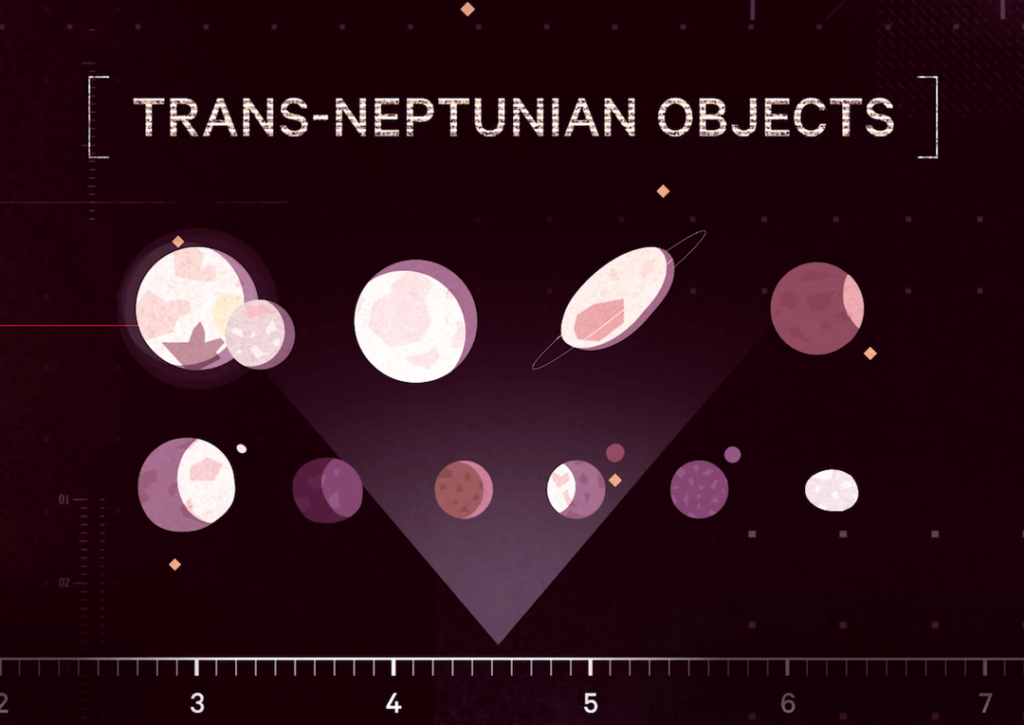PHOTOMETRY: TNOs
To understand our work on TNOs, here is a brief definition of what they are:
A Trans-Neptunian Object (TNO) is a celestial body that orbits the Sun at a distance greater than that of Neptune, typically within the Kuiper Belt or even farther out in regions like the scattered disk or the Oort Cloud. These objects, which include dwarf planets like Pluto and smaller icy bodies, are remnants from the early solar system and are composed primarily of ice, rock, and organic compounds. In the context of photometry, studying TNOs provides critical insights into their physical characteristics, including size, albedo (reflectivity), composition, and surface properties.
–
One main method our team uses to obtain physical characteristics of TNOs is through rotational light-curve analysis. Due to the non-spherical shape of these bodies, the amount of light they reflect from the sun into our telescopes varies with their rotation. We can use this information to measure the rotation period of TNOs.
When we combine years of rotational light-curve data for a single TNO, we can then estimate the direction of its rotational axis from the changes in the shape of the light-curve over time. We aim to measure the direction of the rotational axes for many TNOs to see their directional distribution on the celestial sphere. Since TNOs are thought to be collisionally undisturbed, their spin axis directions are primordial, meaning the directions we measure for their spin axes now is likely the direction they have been oriented since they first formed.
We also use long-term rotational light-curve data to search for unresolved satellites or ‘moons’ of TNOs. In these cases, the reflected light of a TNO and their satellite cannot be separately resolved in an image. The satellite can be discovered by looking for periodic oscillations in the light-curves not caused by the primary object.
For instance, Dr. Fernandez-Valenzuela used this method and found evidence for a satellite of the TNO Varuna here
*This information was written by Cameron Collyer , A Research Member at Florida Space Institute
